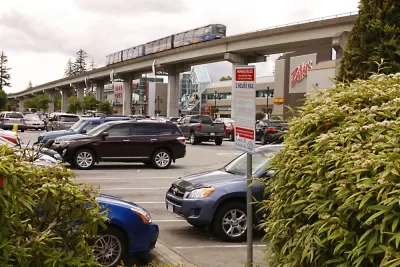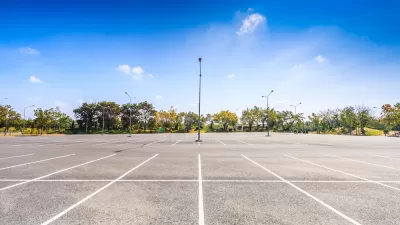Transit Oriented Development projects around the country are still facing suburban-style parking requirements.

Reporting from the Rail-Volution Conference in Dallas, Brandon Formby of The Dallas Morning News looks at how parking requirements for projects around mass transit stations have failed to keep pace with actual needs. Formby cites a study led by University of Utah city planning professor Reid Ewing, which looked at actual parking needs and trip counts for a site in Seattle.
Ewing said the development spurred about 37 percent of the vehicle trips per day that the Institute of Transportation Engineers estimated would occur. He said the guidelines estimated that residential parking demand would require 441 spaces during peak periods. [Ewing] said only 278 spaces would satisfy actual demand.
As has been noted in other studies and articles, the end result of providing more parking than needed is an increase in costs for new housing units in TOD projects. "Those costs are, of course, passed on to renters and buyers — even those without vehicles," said Minneapolis land-use manager Jason Wittenberg.
FULL STORY: Are parking requirements and regulations out of touch with today’s world?

Alabama: Trump Terminates Settlements for Black Communities Harmed By Raw Sewage
Trump deemed the landmark civil rights agreement “illegal DEI and environmental justice policy.”

Study: Maui’s Plan to Convert Vacation Rentals to Long-Term Housing Could Cause Nearly $1 Billion Economic Loss
The plan would reduce visitor accommodation by 25% resulting in 1,900 jobs lost.

Why Should We Subsidize Public Transportation?
Many public transit agencies face financial stress due to rising costs, declining fare revenue, and declining subsidies. Transit advocates must provide a strong business case for increasing public transit funding.

Paris Bike Boom Leads to Steep Drop in Air Pollution
The French city’s air quality has improved dramatically in the past 20 years, coinciding with a growth in cycling.

Why Housing Costs More to Build in California Than in Texas
Hard costs like labor and materials combined with ‘soft’ costs such as permitting make building in the San Francisco Bay Area almost three times as costly as in Texas cities.

San Diego County Sees a Rise in Urban Coyotes
San Diego County experiences a rise in urban coyotes, as sightings become prevalent throughout its urban neighbourhoods and surrounding areas.
Urban Design for Planners 1: Software Tools
This six-course series explores essential urban design concepts using open source software and equips planners with the tools they need to participate fully in the urban design process.
Planning for Universal Design
Learn the tools for implementing Universal Design in planning regulations.
Smith Gee Studio
Alamo Area Metropolitan Planning Organization
City of Santa Clarita
Institute for Housing and Urban Development Studies (IHS)
City of Grandview
Harvard GSD Executive Education
Toledo-Lucas County Plan Commissions
Salt Lake City
NYU Wagner Graduate School of Public Service




























